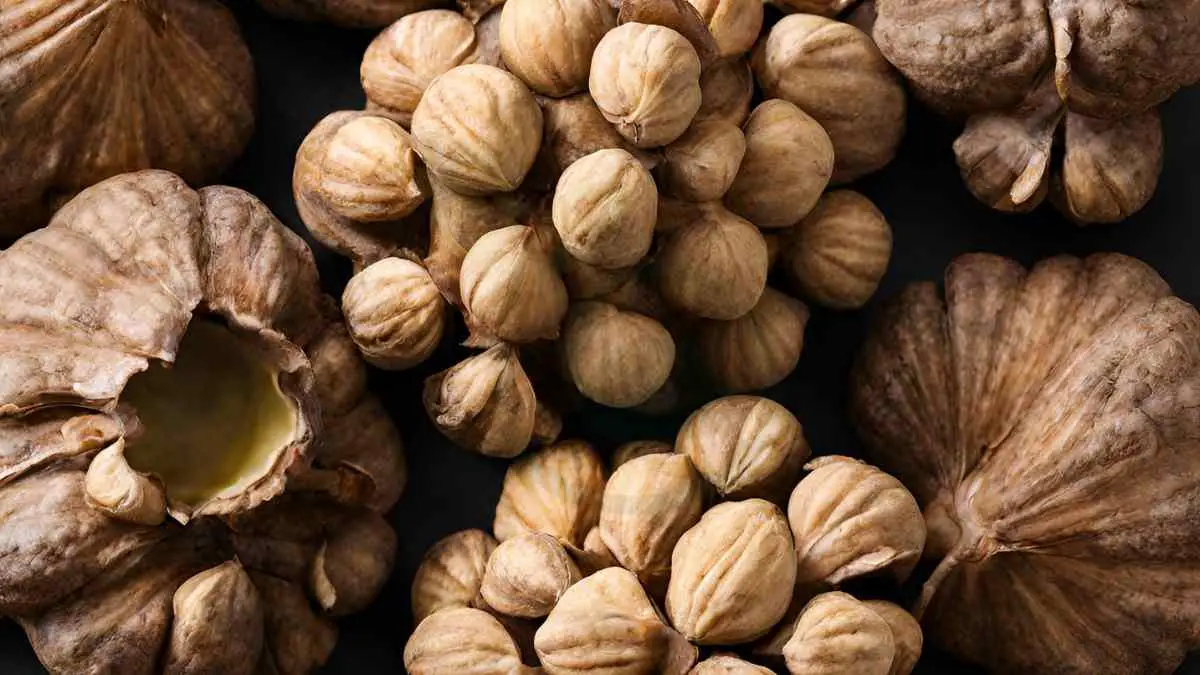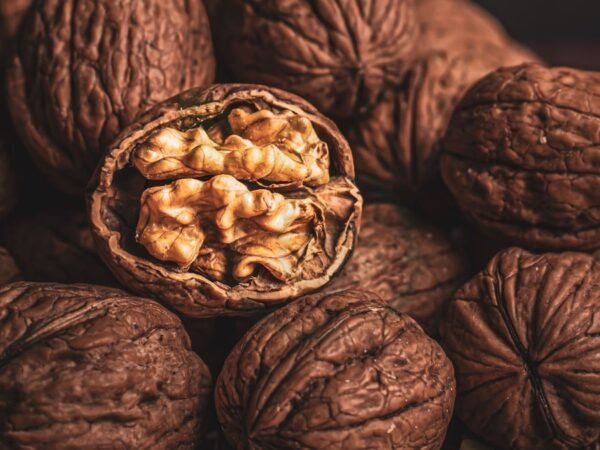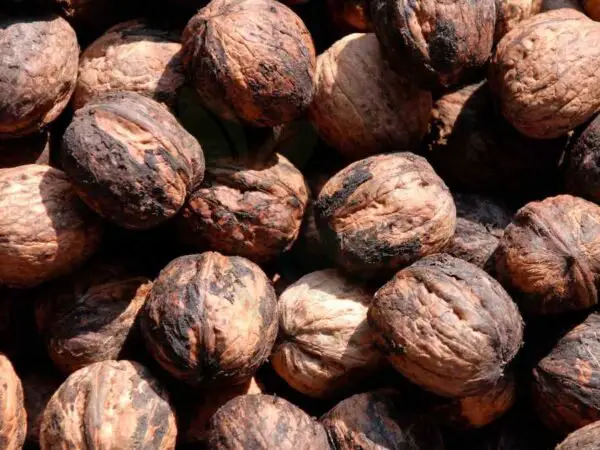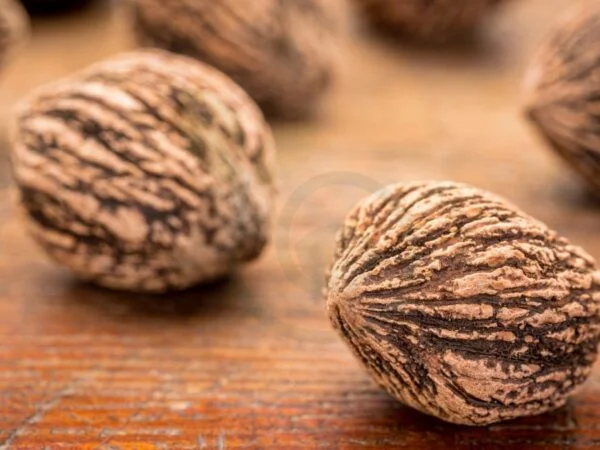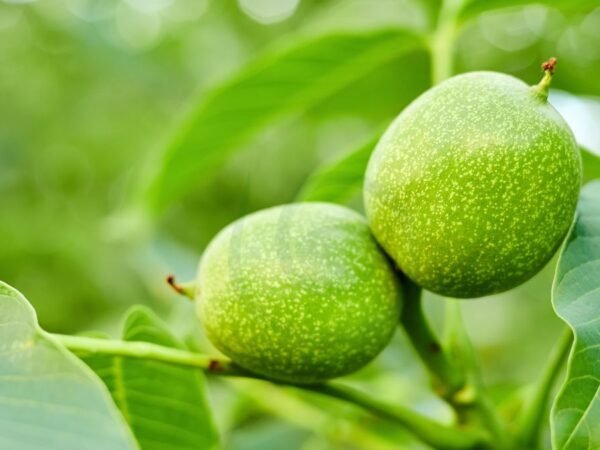Looking to learn how to dry black walnuts? You're in the right place. I'll guide you through the process step by step, so you can enjoy these delicious nuts all year round.
To dry black walnuts, start by hulling the fruit, removing the husks, washing the nuts, and squirrels. Then, spread them out in a single layer on a screen or mesh tray to air dry for several weeks in a cool, well-ventilated area. Turn them regularly to ensure even drying. Alternatively, you can use a food dehydrator set to a low temperature, typically around 95°F (35°C), to speed up the drying process. Once the nuts are thoroughly dried, store them in a cool, dry place in an airtight container to maintain their freshness for up to a year.
Ready to elevate your walnut game? Beyond drying, there are various ways to incorporate black walnuts into your culinary adventures, from baking to salads to savory dishes. Let's explore more creative ways to enjoy these nutritious and flavorful nuts!
Key Takeaways
- Identify Black Walnuts: Recognize black walnuts by their distinctive appearance and unique green husks.
- Harvest with Care: Use proper techniques like wearing gloves and protective clothing when harvesting to avoid staining and skin irritation.
- Dry for Preservation: Dry black walnuts thoroughly to enhance flavor, extend shelf life, and facilitate cracking.
- Crack Efficiently: Employ suitable tools and methods to crack black walnuts effectively without damaging the nutmeat.
- Store Properly: Store dried black walnuts in airtight containers in a cool, dry place to maintain freshness and prevent spoilage.
- Enjoy Health Benefits: Incorporate black walnuts into your diet for their rich nutrients, antioxidants, and potential health benefits.
Identifying Black Walnuts
Seasonal Timing
Identify the fall season for walnut ripening. Determine maturity of walnuts by hull denting. Harvest walnuts in mid to late September.
Visual Identification
Recognize mature walnuts for harvesting. Look for hulls that can be dented with your thumb. Ensure nuts are mature before picking or shaking from trees.
Handling Precautions
Be cautious when handling mature walnuts. Wear gloves to protect hands from staining. Avoid direct contact with the hulls to prevent skin irritation.
Harvesting Techniques
Optimal Harvest Time
Harvest walnuts when fully mature to ensure the best quality nuts for drying. Check for full kernels before gathering them to guarantee optimal results. Aim to harvest during the peak season for black walnuts.
Collection Methods
Pick or shake mature nuts from the tree to obtain the highest quality produce. Alternatively, gather fallen nuts from the ground as they are still suitable for drying. Crack a few nuts open before collecting them to confirm that they contain full kernels.
Safety Measures
When harvesting black walnuts, exercise caution to prevent accidents. Wear appropriate footwear to avoid slipping on fallen nuts and be mindful of potential hazards that may arise during the harvesting process.
Hulling Process
Hull Removal Methods
After harvesting, immediately hull black walnuts to prevent mold growth and spoilage. Utilize methods like stomping on the husks or using machinery for efficiency. Wash the nuts thoroughly post-hulling to eliminate any remaining debris.
Cleaning Nuts
To ensure quality, wash harvested nuts under running water to remove dirt, debris, and juices. Sort the nuts based on filling - sinkers indicate filled nuts ready for drying. It is crucial to ensure the nuts are clean before proceeding with the drying process.
Equipment Needed
For drying black walnuts, prepare a wire screen to allow proper air circulation during drying. Have a hammer or nutcracker on hand to crack open the tough shells efficiently. Utilize a pick and pliers to carefully extract kernels from the hard shell.
Drying Black Walnuts
Preparing for Drying
Before drying black walnuts, wash and sort them to remove any debris or damaged nuts. Spread the nuts in shallow layers to ensure efficient drying and even air circulation. It is essential to make sure that the nuts are clean and completely dry before beginning the drying process.
Selecting Drying Area
When selecting an area for drying black walnuts, opt for a location that is cool, dry, and well-ventilated. Consider using a shed or garage as these areas provide suitable conditions for the drying process. Ensure that the chosen area is conducive to proper air circulation and ventilation during the drying period.
Drying Methods
Air Drying
For air drying black walnuts, allow the nuts to dry naturally for a period of two to three weeks. Spread the nuts in shallow layers on a wire screen to facilitate adequate airflow around each nut. Proper ventilation is crucial during this process to ensure thorough and uniform drying of the walnuts.
Oven Drying
If you prefer an alternative method, consider oven drying black walnuts. Use low heat settings in the oven to gradually dry the nuts without overheating them. It is important to monitor the nuts closely to prevent over-drying or burning, ensuring they retain their flavor and texture.
Sun Drying
Sun drying is a natural method that can be used to dry black walnuts effectively. Place the nuts in a sunny location with direct sunlight exposure for optimal drying results. Rotate the nuts regularly to promote even drying under the sun's warmth, enhancing the overall quality of the dried walnuts.
Cracking the Nuts
Tools Required
- Gather essential tools like a hammer and nutcracker for cracking black walnuts efficiently.
- Prepare a wire screen to dry walnuts effectively after cracking them open.
- Have a pick and pliers on hand to easily extract the nut meats from the shells.
Cracking Techniques
- Crack tough walnut shells using a hammer or nutcracker with controlled force to avoid damaging the kernels inside.
- Soaking the nuts in water before cracking can help reduce shattering, making it easier to access the nut meats.
- Utilize a pick and pliers to extract the kernels from the cracked shells without damaging them.
Storing Walnuts
Ideal Conditions
To ensure walnuts remain fresh, store them in suitable conditions with proper ventilation for drying. For long-term preservation, freeze the kernels.
Maintain adequate ventilation during the drying process to prevent mold growth and ensure optimal freshness. Freezing the walnut kernels helps retain their flavor and texture over an extended period.
Container Types
When storing walnut kernels for freezer storage, opt for plastic bags to maintain freshness and prevent freezer burn. For short-term storage in the refrigerator, use airtight containers to preserve the nuts' quality.
Seal the containers tightly to protect the walnuts from exposure to air, which can lead to rancidity and spoilage. Properly sealed containers also help maintain the nuts' natural oils and flavors.
Troubleshooting Common Issues
Mold Prevention
Prevent mold growth by ensuring nuts are fully dried. Store walnuts in a cool, dry place to avoid moisture buildup, which can lead to mold formation. Check for any signs of mold during storage to address the issue promptly.
Dealing with Pests
Protect walnuts from pests during storage by using airtight containers that prevent pest infestation. Monitor stored walnuts regularly for any signs of pest activity, such as holes or droppings, to take necessary actions.
Health Benefits
Nutritional Value
Black walnuts are nutrient-dense, providing essential vitamins and minerals for overall health. Incorporate them into your diet for added nutrients like omega-3 fatty acids and antioxidants. Regular consumption of walnuts can boost your health significantly.
Culinary Uses
Versatile black walnuts can be used in various culinary applications. Enhance the flavor and texture of your dishes by adding walnuts to salads, baked goods, or desserts. Experiment with different recipes to explore the versatility of incorporating walnuts into your meals.
Recipes and Uses
Baking with Walnuts
Enhance your favorite baked goods by adding chopped walnuts to the mix. Whether it's cookies, cakes, or bread, the inclusion of walnuts brings a delightful crunch and nutty flavor. The rich texture of walnuts elevates the overall experience of indulging in these treats.
When baking, consider incorporating walnut pieces into cookie dough for a delightful surprise in every bite. In cakes, sprinkle chopped walnuts on top for added visual appeal and a contrasting texture. The distinctive taste of walnuts pairs well with various flavors, enhancing the complexity of your baked creations.
Savory Dishes
Incorporating walnuts into savory dishes can elevate your culinary skills to new heights. Add a crunchy element by sprinkling chopped walnuts on salads or pasta dishes for an interesting twist. The combination of textures adds depth to your meal, creating a satisfying dining experience.
For those looking to experiment further, try incorporating walnuts into main courses for a unique touch. From walnut-crusted chicken to walnut-stuffed mushrooms, the possibilities are endless. The versatility of walnuts allows you to explore different flavor profiles and create memorable dishes for yourself and your loved ones.
Final Remarks
After learning how to identify, harvest, hull, dry, crack, and store black walnuts, you are now equipped with the knowledge to enjoy the delicious and nutritious benefits they offer. From enhancing your culinary creations with their unique flavor to reaping their health advantages, black walnuts can elevate your meals and snacks. Remember to troubleshoot any issues that may arise during the process to ensure the best results.
Now that you have mastered the art of handling black walnuts, why not share your newfound expertise with friends and family? Encourage them to explore the world of black walnuts alongside you. Happy cracking and enjoy the bountiful harvest of nature's treasures!
Frequently Asked Questions
How can I identify black walnuts?
Black walnuts have a round, green fruit with a thick, hard shell. The outer husk is dark and rough when ripe. The nut inside has a distinct bumpy surface compared to other nuts.
How do I harvest black walnuts?
Harvest black walnuts by collecting fallen nuts from the ground. Wear gloves to protect your hands from the husk's stain. Use a bucket or bag to gather the nuts.
What is the hulling process for black walnuts?
To hull black walnuts, remove the outer husk by wearing gloves and using a hammer or pliers. Wash the nuts thoroughly to clean off any remaining debris or stains.
How do I dry black walnuts effectively?
Dry black walnuts in a well-ventilated area for 2-3 weeks, ensuring they are spread out in a single layer. Check regularly for mold growth or signs of spoilage.
What are some health benefits of consuming black walnuts?
Black walnuts are rich in antioxidants, omega-3 fatty acids, and essential minerals like magnesium and phosphorus. They may help improve heart health, brain function, and overall well-being when consumed as part of a balanced diet.
Can you share a simple recipe using black walnuts?
Try adding chopped black walnuts to salads, oatmeal, or baked goods for an extra crunch and nutty flavor. You can also make homemade walnut butter by blending roasted black walnuts with a touch of honey and salt.
Image Source: Paid image from CANVA

